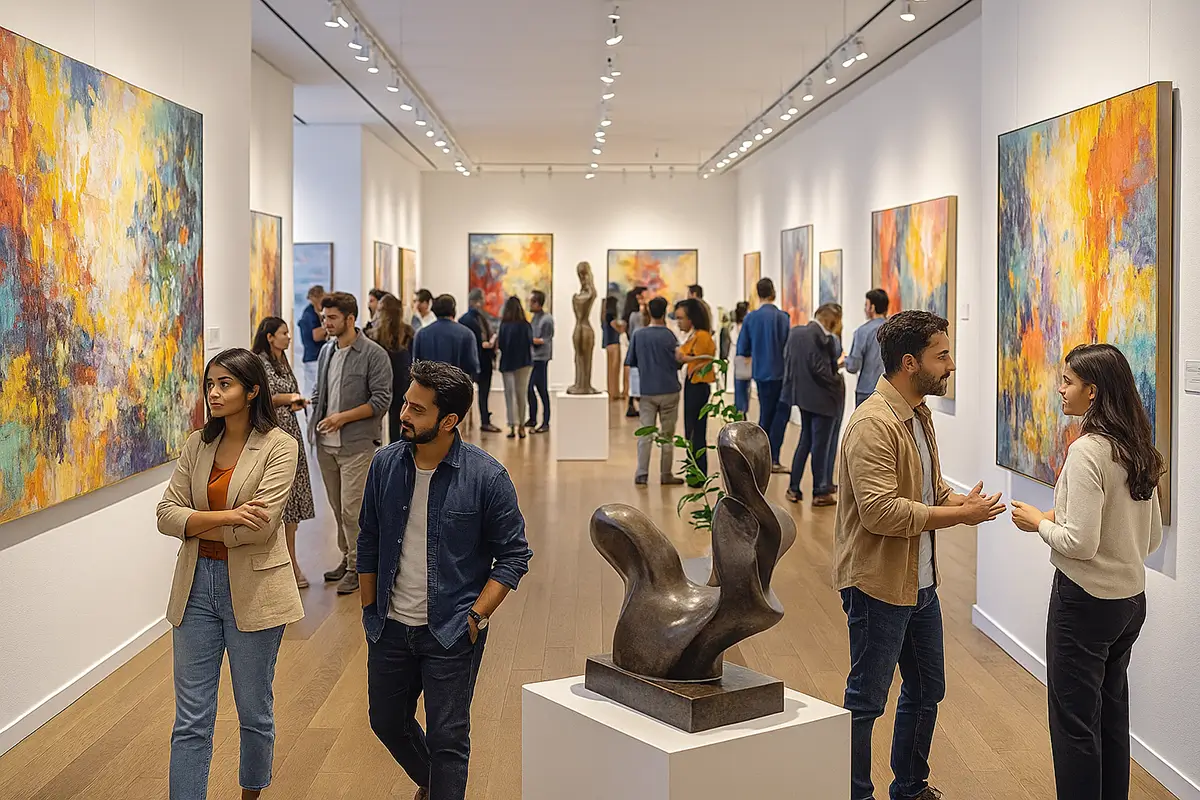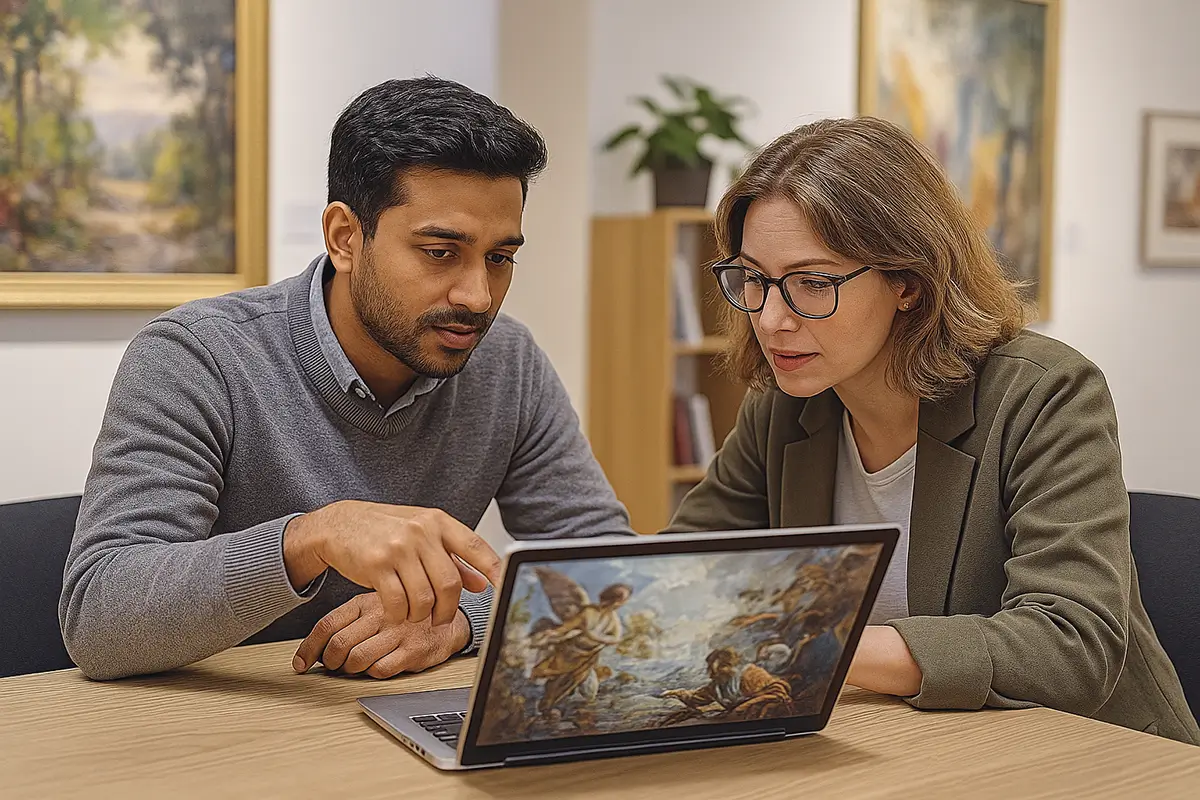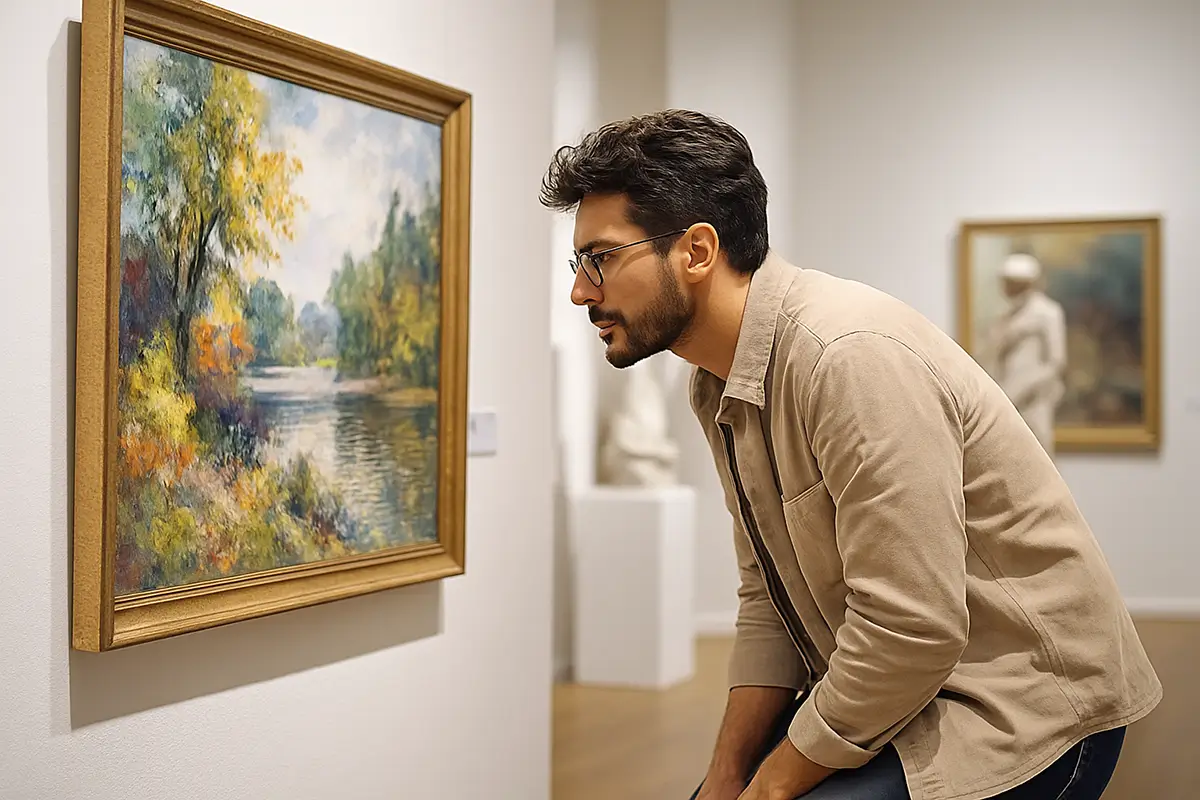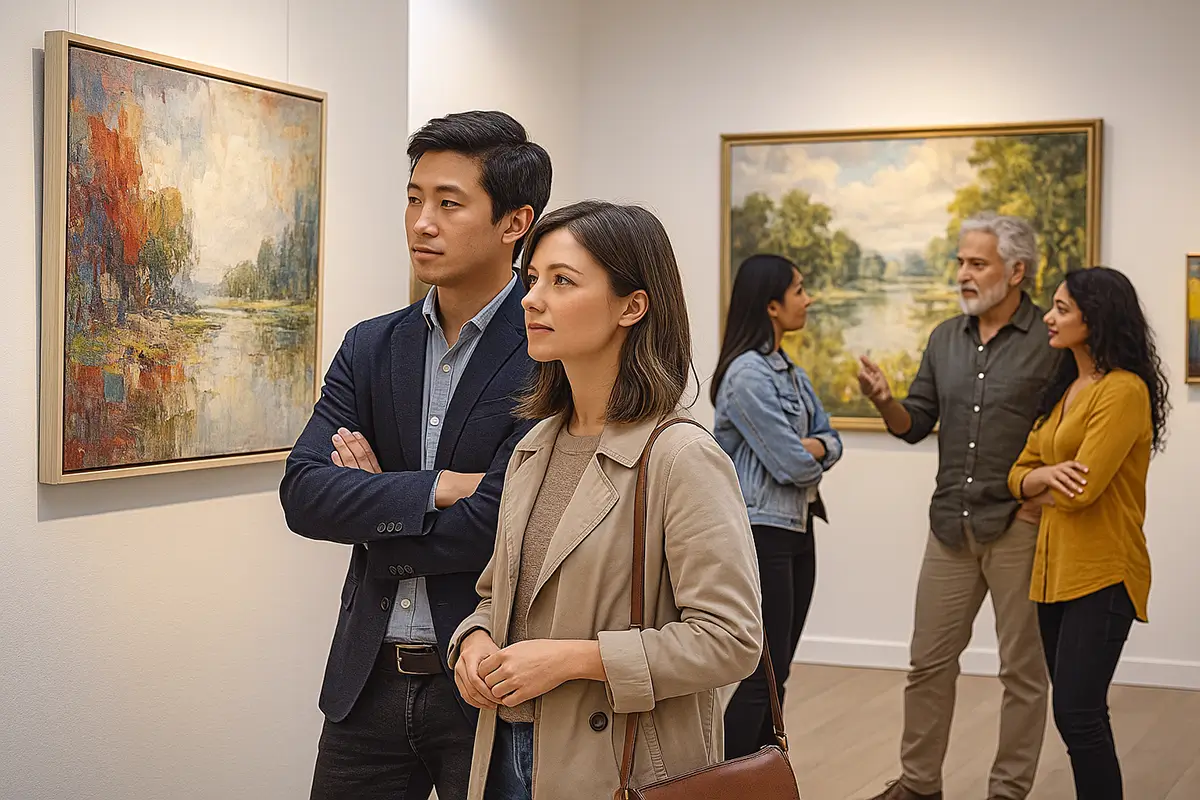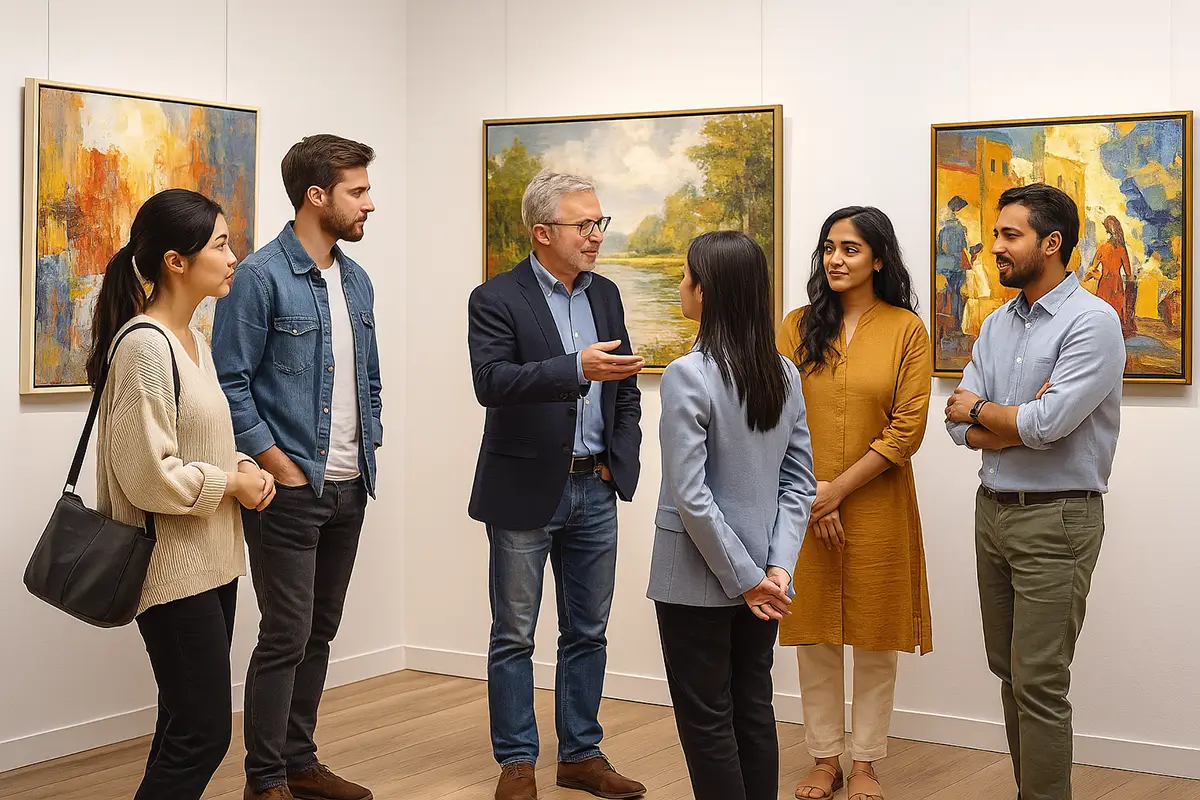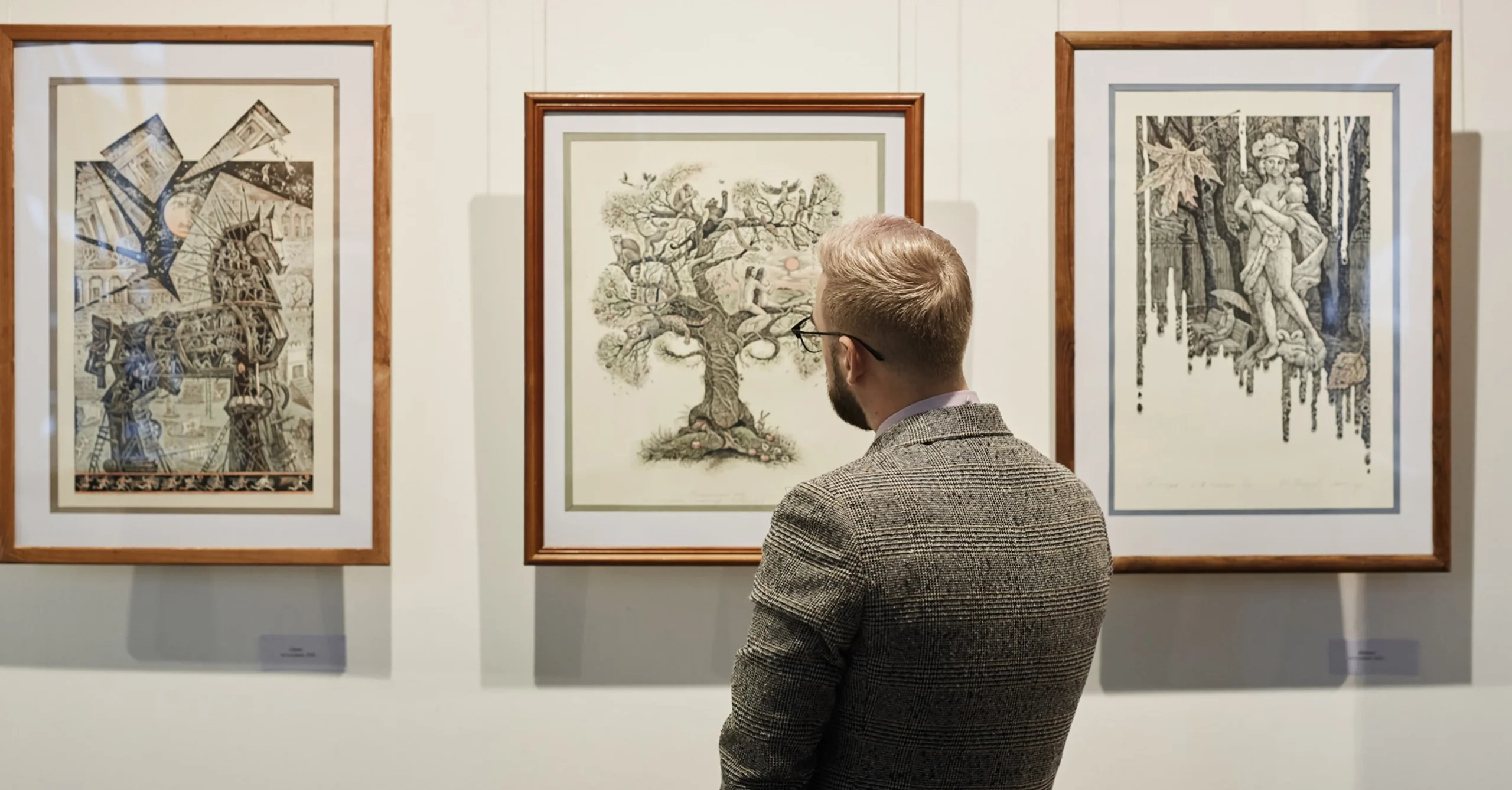Introduction: Art as brand storytelling
In today’s competitive business environment, companies are seeking more than logos and taglines to communicate identity. Increasingly, art has become a medium of storytelling. From office lobbies lined with modern paintings to sculptures in public plazas, corporate art collections do more than decorate—they reflect vision, culture, and values.
In India, corporates are embracing art acquisition as part of brand-building and stakeholder engagement. But making the right acquisitions requires expertise, strategy, and alignment with brand identity. This is where professional art advisory and acquisition services play a crucial role.
Why corporates invest in art
1. Brand identity and culture
- Art reflects corporate values—innovation, inclusivity, heritage, or global outlook.
- A collection becomes part of a company’s cultural DNA.
2. Stakeholder engagement
- Employees feel inspired in art-filled environments.
- Clients and visitors perceive sophistication and vision.
3. Asset diversification
- Art collections are also financial investments.
- Works by recognised artists appreciate in value, providing long-term returns.
4. Corporate responsibility
- Investing in art supports cultural ecosystems and artists.
- Demonstrates leadership in preserving and promoting heritage.
Art and brand identity: The alignment process
Corporate art acquisition is not random. It requires strategic alignment with brand identity.
- Tech companies may collect contemporary or digital art to reflect innovation.
- Banks and financial firms may acquire modern Indian masters to project stability and trust.
- Hospitality brands often showcase local crafts to connect with regional culture.
Advisory services help map brand identity to acquisition strategy, ensuring art becomes a strategic brand asset.
The process of corporate art acquisition
Step 1: Defining goals
- What values should the collection express?
- Is the priority investment, employee engagement, or cultural impact?
Step 2: Collection strategy
- Selection of mediums: paintings, sculptures, installations, or mixed media.
- Decisions on emerging vs established artists.
- Integration with CSR and sustainability goals.
Step 3: Market navigation
- Identifying suitable galleries, auctions, and artists.
- Negotiating fair market prices.
- Ensuring authenticity and provenance.
Step 4: Implementation
- Acquiring works that reflect corporate ethos.
- Curating displays for maximum impact in offices or public spaces.
Step 5: Post-acquisition care
- Cataloging for documentation.
- Conservation and insurance for risk management.
- Periodic valuation for asset management.
Case studies: Corporates using art to reflect identity
Case 1: IT company in Bangalore
Focused on innovation, the company commissioned digital art installations in its headquarters. The works reinforced its reputation as a forward-thinking, tech-driven leader.
Case 2: Bank in Mumbai
The bank curated a collection of modern Indian masters to showcase stability, credibility, and cultural sophistication. Art became part of client interactions, enhancing trust.
Case 3: Hospitality group in Rajasthan
Hotels within the group displayed regional crafts and folk art, connecting guests to local heritage and reinforcing the brand’s cultural immersion promise.
The economics of corporate art acquisition
- Cost management: Advisory services negotiate fair prices and prevent overpaying.
- Value appreciation: Collections can increase in value over time, offering returns.
- Insurance readiness: Conserved, documented collections are easier to insure.
- CSR integration: Acquisition can qualify under CSR for cultural promotion.
In India, where corporate spending on branding and stakeholder engagement is growing, art acquisition offers a tangible and long-term ROI.
Challenges in corporate acquisitions
- Lack of expertise – Many corporates rely on ad-hoc decisions, risking poor alignment or overpayment.
- Market risks – Without due diligence, fakes or inflated prices may enter collections.
- Conservation gaps – Improper storage or display can damage works.
- CSR misalignment – Without strategy, acquisitions may fail to connect with cultural objectives.
Professional Art Acquisition & Advisory Services mitigate these risks, ensuring collections are built strategically and sustainably.
Best practices for corporates in art acquisition
- Develop a clear policy for acquisitions linked to brand identity.
- Engage advisors for market navigation, due diligence, and valuation.
- Invest in diversity—balance between established names and emerging voices.
- Integrate conservation into collection planning.
- Use art as storytelling, not just decoration.
- Review and update strategy as brand evolves.
Role of advisory services
Advisory brings expertise, strategy, and market access:
- Mapping brand values to acquisition strategy.
- Conducting due diligence on authenticity, provenance, and valuation.
- Curating collections that balance aesthetic impact and financial prudence.
- Offering post-acquisition services—conservation, insurance, cataloging.
The future of corporate art acquisition in India
- Integration with ESG: Art will increasingly reflect sustainability and inclusivity values.
- Digital and experiential art: Growing role of new media in corporate storytelling.
- Public-private collaborations: Corporates may co-sponsor cultural conservation initiatives.
- Professionalisation: More corporates will adopt structured acquisition policies guided by advisory firms.
Conclusion: Art as business strategy
For corporates in India, art acquisition is more than aesthetics. It is about identity, credibility, and leadership. By strategically building collections, companies communicate values to employees, clients, and society at large.
Professional advisory ensures acquisitions are authentic, aligned, and sustainable—turning collections into living embodiments of brand identity.
Explore our Art Acquisition & Advisory Services. At TurmericEarth, we partner with corporates to build art collections that inspire, endure, and define brands for generations.



